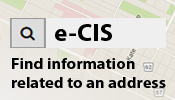Potholes
Potholes are a nuisance to drivers and can be a hazard on the roadway.
It is important for residents to report potholes by contacting 311 or using our easy online form.
Contact Manitoba Public Insurance (MPI) if your vehicle was damaged when hitting a pothole.
Cause
Freeze thaw cycles during the spring season cause most potholes. During warmer weather, the snow melts, causing water to seep into the cracks in the pavement and/or sub base. When the temperature drops, the water freezes and causes the sub base to expand. This puts pressure on the pavement in a small area, resulting in pavement failure or a pothole.
Similarly, water in the cracks or in between the concrete and asphalt overlays can freeze, causing pieces of pavement to pop out. Heavy traffic puts an added burden on weak pavement.
Repair
An important part of street maintenance is repairing potholes. The City strives to repair potholes in a safe and cost effective manner, keeping in mind safety, budget, personnel, and environmental concerns. Depending on the situation, the pothole repair method may vary from the temporary repairs that crews make during the winter season and cold wet springtime conditions, to a pressurized-emulsion patch, to a longer term hot asphalt repair under dry conditions. See repair method descriptions below:
Temporary repair
- Cold-mix patch
- Asphalt product designed to remain workable during cold weather.
- Good bond between pavement and patch is not established, and in turn water can quickly find its way under the patch forcing it out of the pothole due to freeze/thaw action.
- It is intended to be a short-term repair to improve road safety during cold and wet conditions.
Pressurized-emulsion patch
- Machine-applied spray consisting of a combination of hot emulsified asphalt oil and crushed limestone chips.
- The high pressure at which the patching material is sprayed forces it tightly into the pothole, and to some extent, it displaces any water that may be in the pothole.
- It is intended to be a medium-term repair that lasts approximately six to eight months.
Longer term hot asphalt repair
- Hot-mix patch made of hot asphalt.
- Applied during dry weather.
- Debris in the pothole is swept/blown out and a tack coat of sticky emulsified asphalt oil is applied to the pothole.
- The hot asphalt mixture is placed into pothole and compacted with a vibratory plate compactor or vibratory roller.
- Produces a dense, hard patch that seals the edges of the pothole preventing water from getting under the patch.
- It is intended to be a longer-term repair.
Reporting a vehicle damaged by a pothole
If your vehicle was damaged when you hit a pothole, we recommend contacting Manitoba Public Insurance. A clear advantage to contacting them is that the MPI Adjuster will handle many of the details associated with resolving this situation.
You also have the option of contacting City Claims directly; however you will be responsible for handling many of the details that the MPI Adjuster would have handled for you.
When contacting City Claims directly, you will be expected to:
- Provide a minimum of two estimates
- Arrange an appointment with a City Claims adjuster to see damage
By far, the easiest way to handle this situation is to contact Manitoba Public Insurance.
Visit the MPI Contact Us page.

